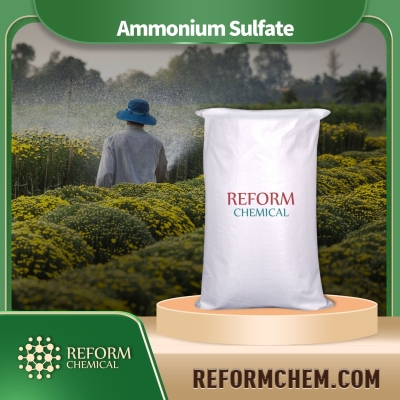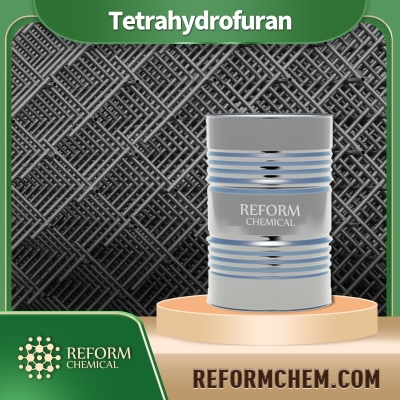-
Categories
-
Pharmaceutical Intermediates
-
Active Pharmaceutical Ingredients
-
Food Additives
- Industrial Coatings
- Agrochemicals
- Dyes and Pigments
- Surfactant
- Flavors and Fragrances
- Chemical Reagents
- Catalyst and Auxiliary
- Natural Products
- Inorganic Chemistry
-
Organic Chemistry
-
Biochemical Engineering
- Analytical Chemistry
-
Cosmetic Ingredient
- Water Treatment Chemical
-
Pharmaceutical Intermediates
Promotion
ECHEMI Mall
Wholesale
Weekly Price
Exhibition
News
-
Trade Service
Now it's the spring plowing season for farmers, and agricultural products have become a hot commodity in the market
.
In order to ensure the quality of farming, farmers usually choose chemical fertilizers and pesticides after farming
.
The quality of chemical fertilizers and pesticides has become a matter of concern to everyone.
How to choose qualified chemical fertilizers? How to use pesticides correctly? Please listen to the advice of experts: According to reports, three methods can be selected to identify genuine and fake fertilizers from the appearance
.
One is the packaging identification method
.
1.
Inspection mark: According to relevant regulations of the state, the chemical fertilizer packaging bag must be marked with the product name, nutrient content, grade, trademark, net weight, standard code, factory name, factory address, and production license number identification
.
If there is no such mark or the mark is incomplete, it may be fake or inferior fertilizer
.
2.
Check the sealing of the packaging bag: pay special attention to the chemical fertilizers with obvious unsealing marks on the packaging sealing.
This phenomenon may be caused by adulteration
.
The second is the shape and color identification method
.
1.
Urea is white or light yellow, with granular, needle-like or prismatic crystals, no powder or little powder; 2.
Ammonium sulfate is white crystals; 3.
Ammonium chloride is white or light yellow crystals; 4.
Carbonic acid Ammonium hydrogen is white or other colored powder or granular crystals
.
There are also individual manufacturers that produce large-particle oblate spherical ammonium bicarbonate; 5.
Superphosphate is off-white or light gray powder; 6.
Heavy superphosphate is dark gray, off-white particles or powder; 7.
Potassium sulfate is white crystal or powder; 8.
, Potassium chloride is white or light red particles
.
The third is the odor identification method
.
If the liquid with a strong pungent ammonia smell is ammonia; the particles with a clear pungent ammonia smell are ammonium bicarbonate; the sour powder is superphosphate
.
If the superphosphate has a pungent sour taste, it means that waste sulfuric acid was probably used in the production process
.
This kind of fertilizer is very toxic and easily damages or burns crops
.
It should be reminded that although some fertilizers are real but low in content, such as inferior superphosphate, the effective phosphorus content is less than 8% (the minimum standard should be 12%).
These fertilizers are inferior fertilizers and have little effect.
Professionals should be identified
.
The use of pesticides should comply with the pesticide anti-poison regulations, correctly dispense and apply pesticides, and do a good job in waste disposal and safety protection to prevent environmental pollution and pesticide poisoning
.
Highly toxic and highly toxic pesticides shall not be used in vegetables, fruits, tea, Chinese herbal medicines, and prevention and control of sanitary pests
.
It is strictly forbidden to poison fish, shrimp, birds, animals, etc.
with pesticides
.
.
In order to ensure the quality of farming, farmers usually choose chemical fertilizers and pesticides after farming
.
The quality of chemical fertilizers and pesticides has become a matter of concern to everyone.
How to choose qualified chemical fertilizers? How to use pesticides correctly? Please listen to the advice of experts: According to reports, three methods can be selected to identify genuine and fake fertilizers from the appearance
.
One is the packaging identification method
.
1.
Inspection mark: According to relevant regulations of the state, the chemical fertilizer packaging bag must be marked with the product name, nutrient content, grade, trademark, net weight, standard code, factory name, factory address, and production license number identification
.
If there is no such mark or the mark is incomplete, it may be fake or inferior fertilizer
.
2.
Check the sealing of the packaging bag: pay special attention to the chemical fertilizers with obvious unsealing marks on the packaging sealing.
This phenomenon may be caused by adulteration
.
The second is the shape and color identification method
.
1.
Urea is white or light yellow, with granular, needle-like or prismatic crystals, no powder or little powder; 2.
Ammonium sulfate is white crystals; 3.
Ammonium chloride is white or light yellow crystals; 4.
Carbonic acid Ammonium hydrogen is white or other colored powder or granular crystals
.
There are also individual manufacturers that produce large-particle oblate spherical ammonium bicarbonate; 5.
Superphosphate is off-white or light gray powder; 6.
Heavy superphosphate is dark gray, off-white particles or powder; 7.
Potassium sulfate is white crystal or powder; 8.
, Potassium chloride is white or light red particles
.
The third is the odor identification method
.
If the liquid with a strong pungent ammonia smell is ammonia; the particles with a clear pungent ammonia smell are ammonium bicarbonate; the sour powder is superphosphate
.
If the superphosphate has a pungent sour taste, it means that waste sulfuric acid was probably used in the production process
.
This kind of fertilizer is very toxic and easily damages or burns crops
.
It should be reminded that although some fertilizers are real but low in content, such as inferior superphosphate, the effective phosphorus content is less than 8% (the minimum standard should be 12%).
These fertilizers are inferior fertilizers and have little effect.
Professionals should be identified
.
The use of pesticides should comply with the pesticide anti-poison regulations, correctly dispense and apply pesticides, and do a good job in waste disposal and safety protection to prevent environmental pollution and pesticide poisoning
.
Highly toxic and highly toxic pesticides shall not be used in vegetables, fruits, tea, Chinese herbal medicines, and prevention and control of sanitary pests
.
It is strictly forbidden to poison fish, shrimp, birds, animals, etc.
with pesticides
.






